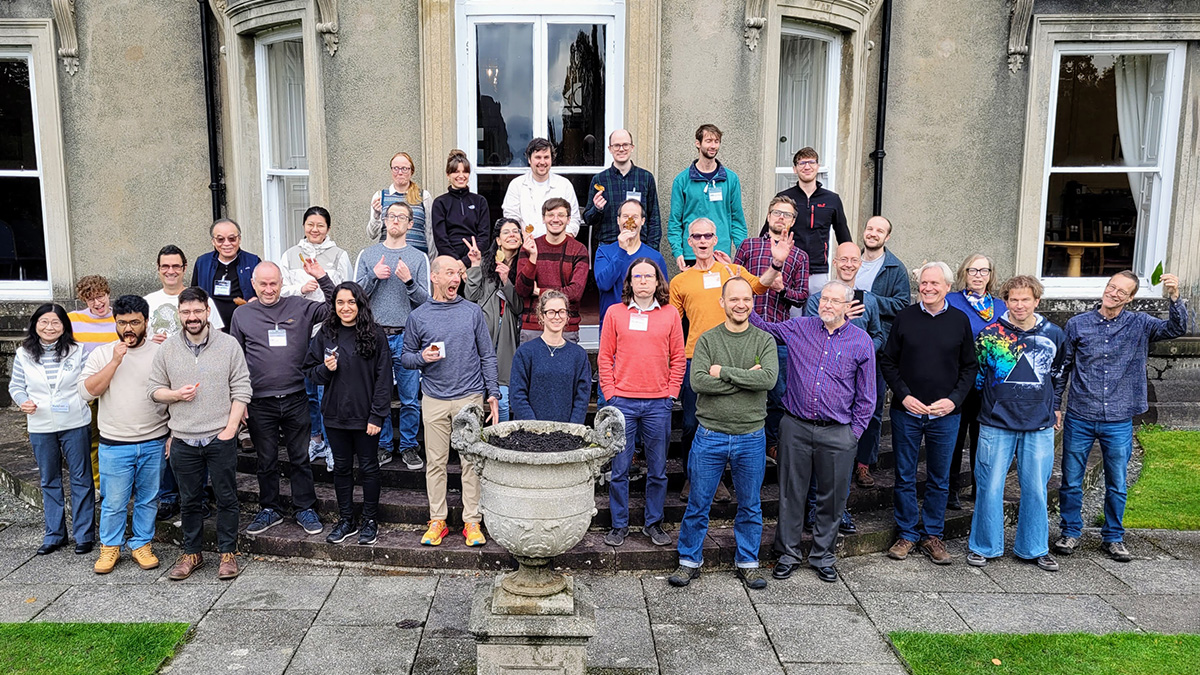Environmental models and software are essential for understanding and predicting the complex interactions of the natural world. But often, our models follow programming paradigms and technological set-ups that have persisted for decades, with little thought given to their sustainability or societal and ethical impacts. Dr Sam Harrison reports from a recent workshop where leading scientists from across the globe got together to discuss these issues and envision the future of environmental modelling…
“Models” are mathematical descriptions of real-world systems that give us the ability to predict future events, such as what the weather might look like next week, and whether this might present a flood risk. They give us insights into complex processes and help us expand our scientific knowledge, ensuring we make informed decisions for a sustainable future.
However, these models often rely on outdated programming concepts. For example, they are often large, intertwined codebases rather than flexible, standalone modules, making them difficult to update and adapt to emerging risks or new problems. Furthermore, modelling efforts often overlook ethical and sustainability issues, like the carbon footprint of running complex simulations or the societal impacts of using model predictions to inform policy.
There are also significant opportunities that the environmental modelling community needs to figure out how to embrace, such as Artificial Intelligence (AI), citizen or community science, and an ever-increasing supply of data from the real world to inform our models.
So, what might the next generation of environmental models look like?
These issues were the focus of a recent workshop I coordinated at Rydal Hall in the Lake District. Over four days, it brought together interdisciplinary scientists from around the world, all sharing a common interest in addressing such challenges.
Through a series of seminars, tutorials and a large focus on interactive discussions and activities, we explored the question “what does the next generation of environmental models look like?”. Along the way, we tackled topics covering everything from software engineering best practices, AI, exascale computing (powerfully fast supercomputing) and big data through to the socialness of science, green computing, interdisciplinary learning and citizen science.

We had some inspiring discussions and decided on tangible steps forward to strengthen our community on its path towards enabling better predictions of the natural world. I really look forward to seeing how the community and its work progress.
The workshop was part of broader efforts to develop an international community of practice around environmental modelling, through a project where we are collaborating with the Community Surface Dynamics Modeling System (CSDMS, based at the University of Colorado Boulder), TU Delft, the Netherlands eScience Center, Plymouth Marine Laboratory and the University of Massachusetts Dartmouth. We took inspiration from the 2500-strong CSDMS community, with an explicit goal to broaden the geographic reach of this community in Europe. CSDMS are pioneers in integrated environmental modelling, with a history of developing software, interfaces, standards and educational resources that are widely used across environmental modelling communities.
The workshop wouldn’t have been possible without the fantastic facilitation provided by Dee Hennessy (Creative Exchange), coordination and support from Diana Jerome and Philippa Jepson (UKCEH), and funding provided by NERC, UKCEH’s National Capability fund and the Centre of Excellence in Environmental Data Science (CEEDS).

